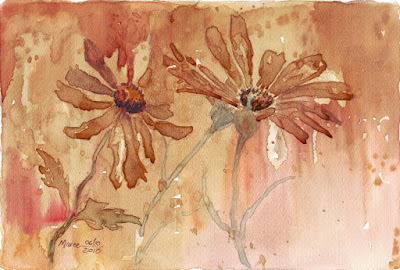- George Orwell
A daily practice of sketching and painting gives you a chance to exercise the big three P's - practice, practice, practice!

'Wild Dog' - Coffee on Bockingford 300gsm - 12" x 8" - Maree©
The Painted dog or *African Wild Dog* (Lycaon pictus), is a medium-sized canid found only in Africa, especially in Savannahs and other lightly wooded areas. It is also called the *Painted Hunting Dog, African Hunting Dog,* the *Cape Hunting Dog,* the *Spotted Dog,* the *Ornate Wolf* or the *Painted Wolf* in English, *Wildehond* in Afrikaans, and *Mbwa mwitu* in Swahili. It is the only extant species in the genus _Lycaon_, with one species, L. sekowei, being extinct.
There were once approximately 500,000 African Wild Dogs in 39 countries, and packs of 100 or more were not uncommon. Now there are only about 3,000-5,500 in fewer than 25 countries ore less. They are primarily found in Eastern and Southern Africa, mostly in the two remaining large populations associated with the Selous Game Reserve in Tanzania and the population centered in northern Botswana and Eastern Namibia.
Whilst the largest population resides in the Kruger National Park (South Africa), some wild dogs have been released into Madikwe, Pilanesberg and Hluhluwe-Mfolozi, South Africa.
I did this painting with coffee on tea-stained (Five roses, black, and VERY strong!) Bockingford 300gsm - 12" x 8"










